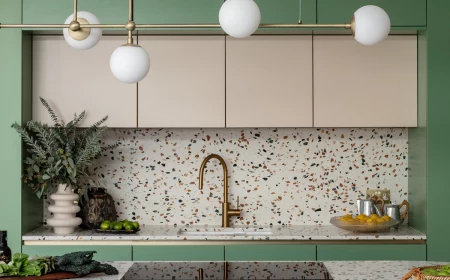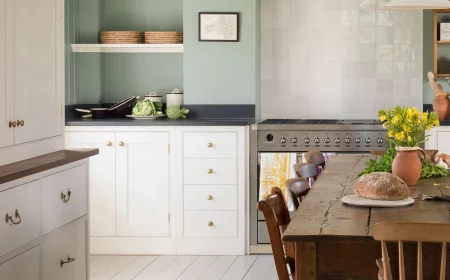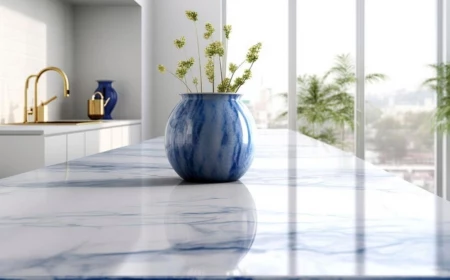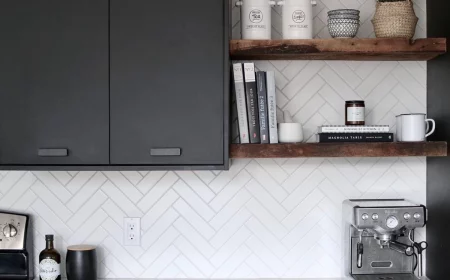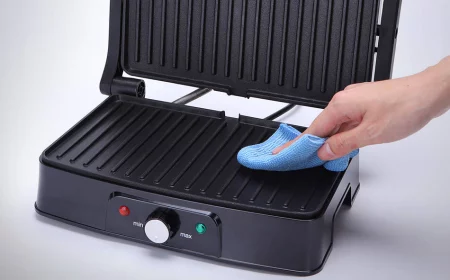The Kitchen Cure: Design Your Space to Make Healthy Eating Effortless
I’ve spent my career designing kitchens, from cramped city apartments to huge country houses. My job is to make them work well and look great. But I stumbled onto something pretty profound early on: a kitchen’s design can either be your best friend or your worst enemy when it comes to health.
In this article
It’s not about having the fanciest, most expensive gear. It’s about the flow. The light. It’s about where you put the olive oil. I started chatting with nutritionists and even some behavioral therapists, and they all said the same thing. Our environment gently nudges us toward our choices every single day. A well-designed kitchen makes the good choice the easy choice. It’s that simple.
I once had a client, a super-busy lawyer who wanted to eat better but was surviving on takeout. His kitchen was stunning and modern, but totally working against him. The veggie drawer was buried at the bottom of the fridge, his good knives were lost in a drawer behind a mess of gadgets, and his beautiful island was a graveyard for mail and catalogs. We didn’t do a big remodel. We just… rearranged. A few months later, he told me he was cooking most nights. The change, he joked, wasn’t in him—it was in the kitchen. So, let’s walk through the same principles I used for him.
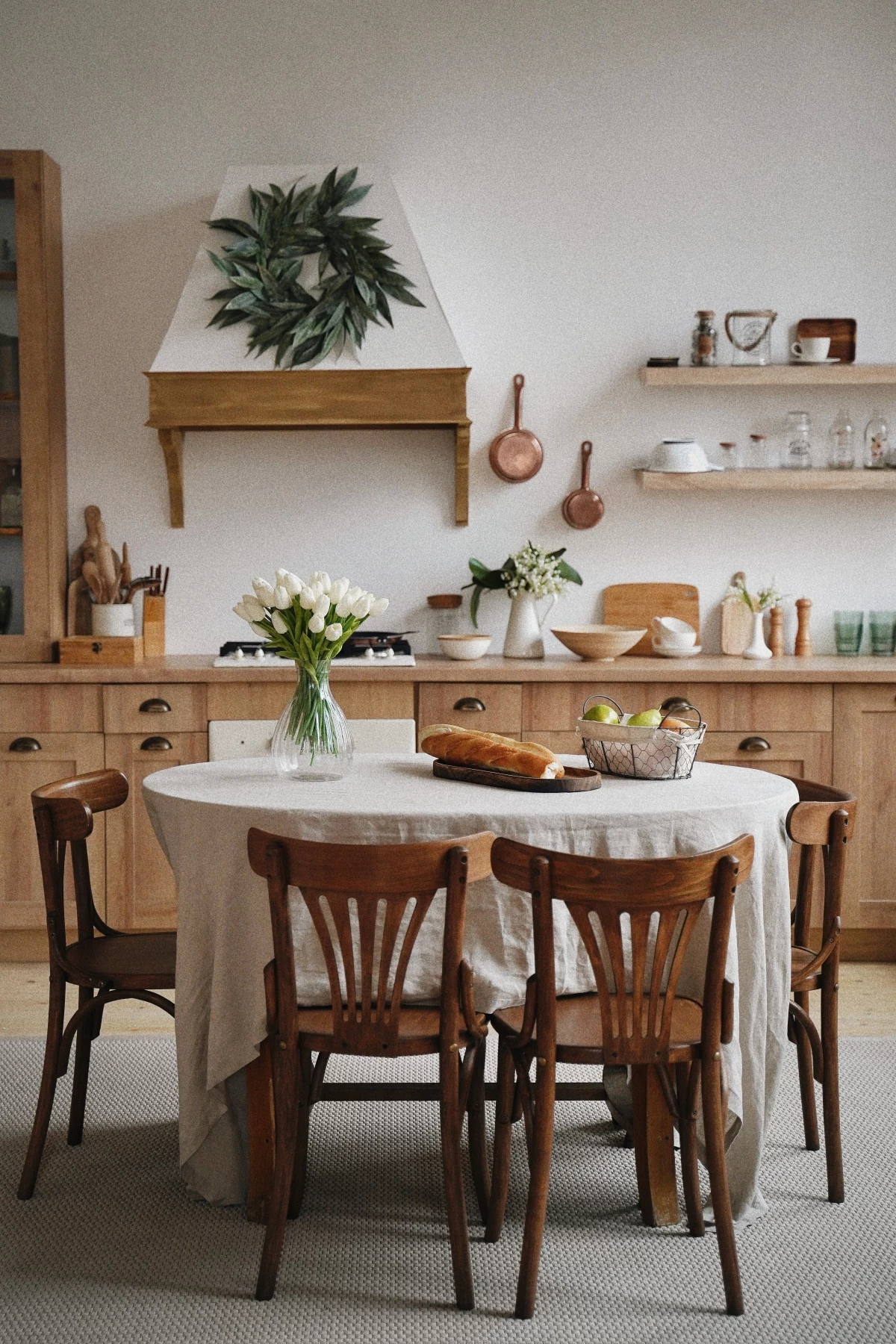
Why Your Kitchen’s Layout Matters More Than Your Willpower
Before we move a single thing, you have to get the “why.” Your kitchen is constantly influencing you through something the pros call “choice architecture.” It just means that how choices are presented to you dramatically affects what you decide. Supermarkets are masters at this—they put the candy right at the checkout for a reason. We’re just going to flip the script and use those same tricks for our own good.
Think about it. If the first thing you see when you walk into your kitchen is a jar of cookies on the counter, your brain gets a little ping. It remembers that sweet, chewy goodness and a craving is born. But what if you saw a beautiful bowl of crisp, red apples instead? It’s a different signal, a different craving. The goal is to surround yourself with cues for the habits you actually want.
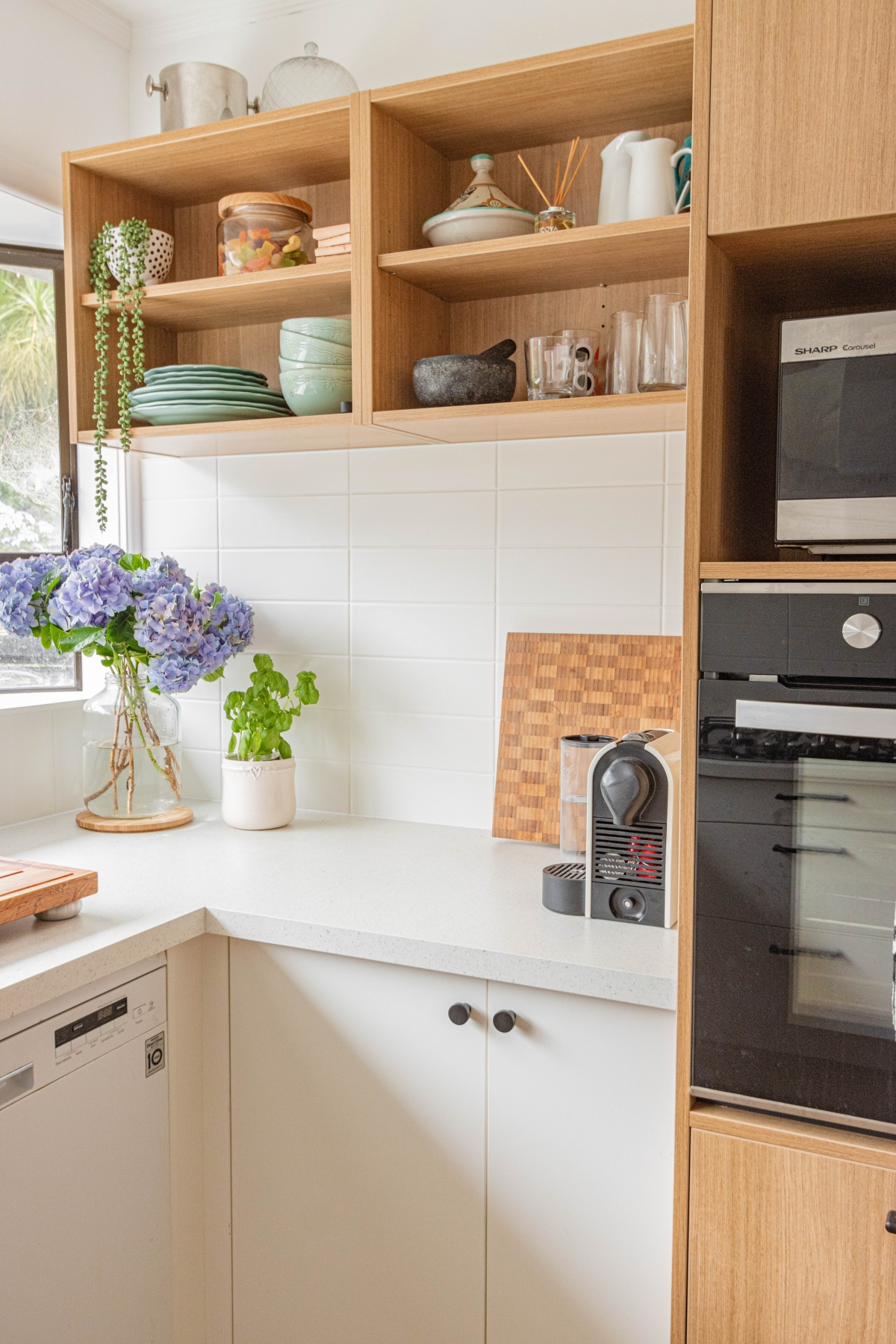
This also ties into something called cognitive load—a fancy term for how much mental energy something takes. A cluttered, messy kitchen is exhausting. Just the thought of having to clear the counter before you can even chop an onion is enough to make you reach for your phone to order a pizza. A clean, organized space with clear zones? It feels manageable, even inviting. The less friction between you and a healthy meal, the better.
The ‘Sacred’ Prep Zone: Your New Best Friend
You’ve probably heard of the classic kitchen “work triangle” connecting the fridge, sink, and stove. It’s a solid, traditional concept. But for a health-focused kitchen, I like to tweak it into what I call the “Prep-First” layout. The most important part of healthy eating is prepping fresh ingredients, so we make that the easiest job in the room.
Your prep zone is the heart of your healthy kitchen. Ideally, it’s a clear stretch of countertop—at least 36 inches wide—right between your sink and your fridge. This creates a super-efficient flow: grab food from the fridge, rinse it at the sink, and get to chopping. No wasted steps.
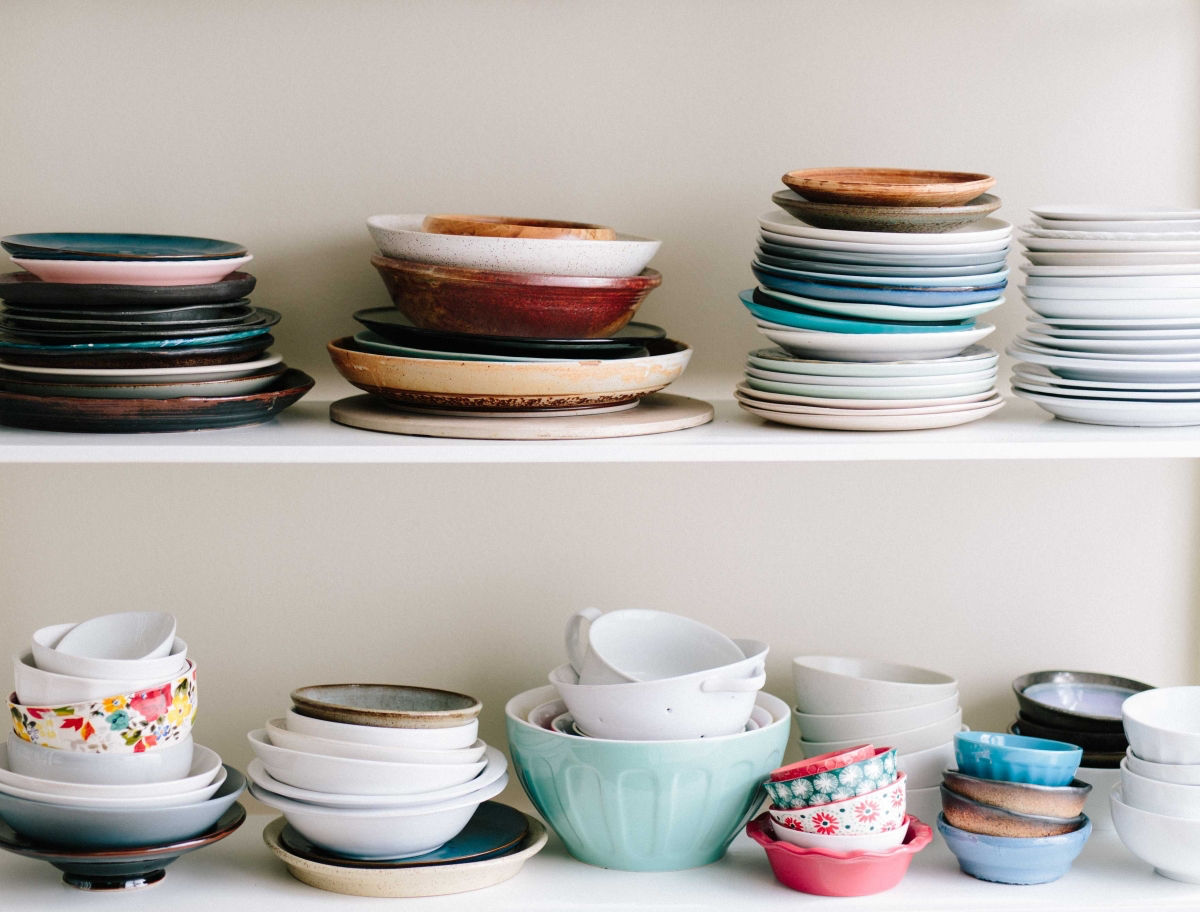
Here’s how to set it up like a pro:
- Clear the Decks: This space is sacred. Keep it completely empty. No mail, no toaster, not even the fruit bowl (we’ll find a better spot for that). Its emptiness should feel like an invitation to cook.
- Tools Within Reach: Your most-used tools need to live here. I’m a huge fan of a magnetic knife strip on the wall for your go-to knives. A simple crock with your favorite wooden spoons and spatulas should be right there. Your main cutting board can even live here, propped up against the backsplash.
- Easy Waste Management: Put a trash can or a compost bin right under this counter space. A pull-out drawer is amazing, but a simple step-can works perfectly, too. No more walking across the kitchen with dripping carrot peels. It’s a small change that feels like a luxury.
Rethinking Your Pantry & Fridge
How you organize your storage is a direct application of choice architecture. We’re going to make the good stuff obvious and the not-so-good stuff a little less convenient. It’s not about restriction; it’s about making conscious choices easier.
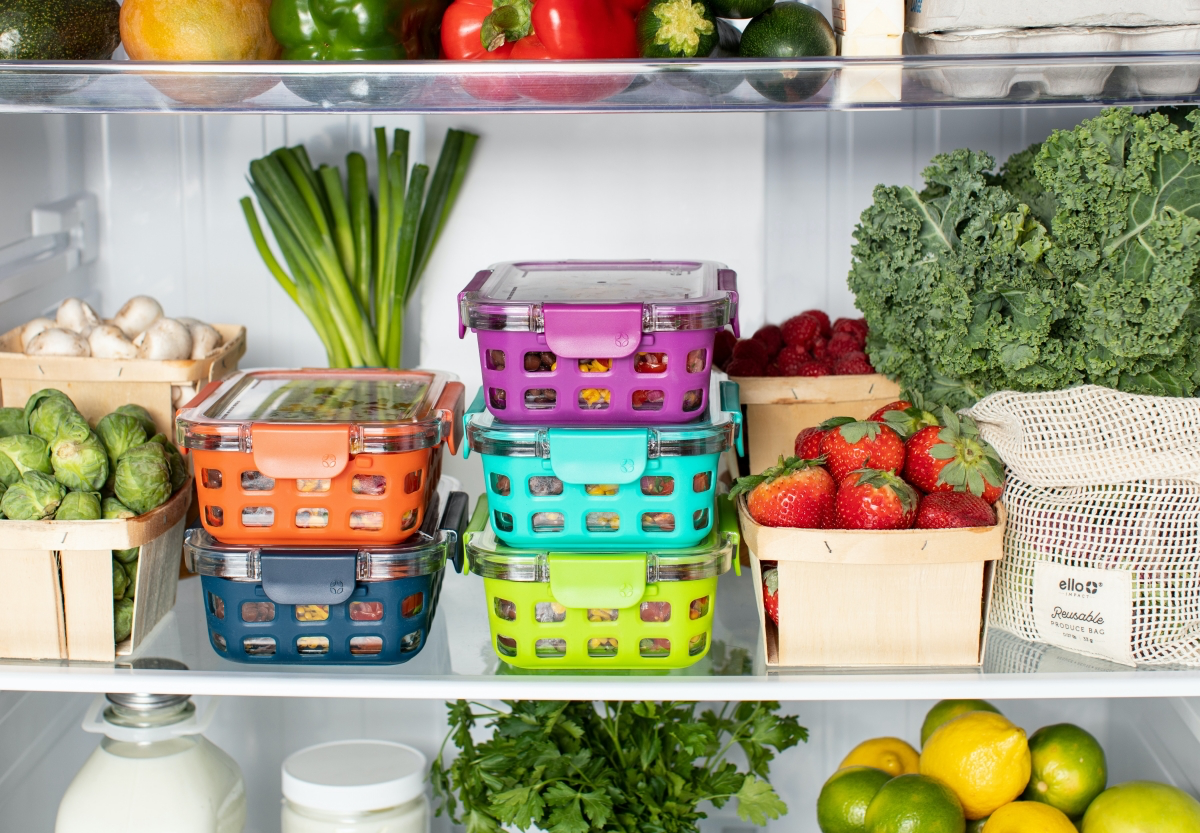
The Pantry Overhaul
Your pantry should be organized like a little boutique of healthy ingredients.
- The Eye-Level Rule: The shelf right at your eye level is prime real estate. This is where your healthy staples go. My top tip? Invest in some clear, airtight containers. I personally love brands like OXO or Rubbermaid Brilliance. Fill them with things like oats, quinoa, brown rice, lentils, and nuts. Seeing these beautiful, organized ingredients makes you genuinely want to use them.
- The ‘Indulgence’ Bin: Look, I don’t believe in banning treats. That almost always backfires. Instead, give them a designated home. Take chips, cookies, and candy out of their loud, colorful packaging and put them in an opaque, uniform bin. (The KUGGIS boxes from IKEA are perfect for this.) Then, stick that bin on the top shelf or the bottom shelf. This does two things: it removes the flashy marketing, and it adds a tiny physical hurdle. You have to make a real decision to get the step stool or bend way down. That little pause is surprisingly powerful.
Heads up! A common mistake I see is people buying pretty, round storage containers. They look great on their own, but on a shelf, they waste a ton of space. To be truly efficient, always go for square or rectangular containers. They fit together like a puzzle and maximize every inch of your pantry.
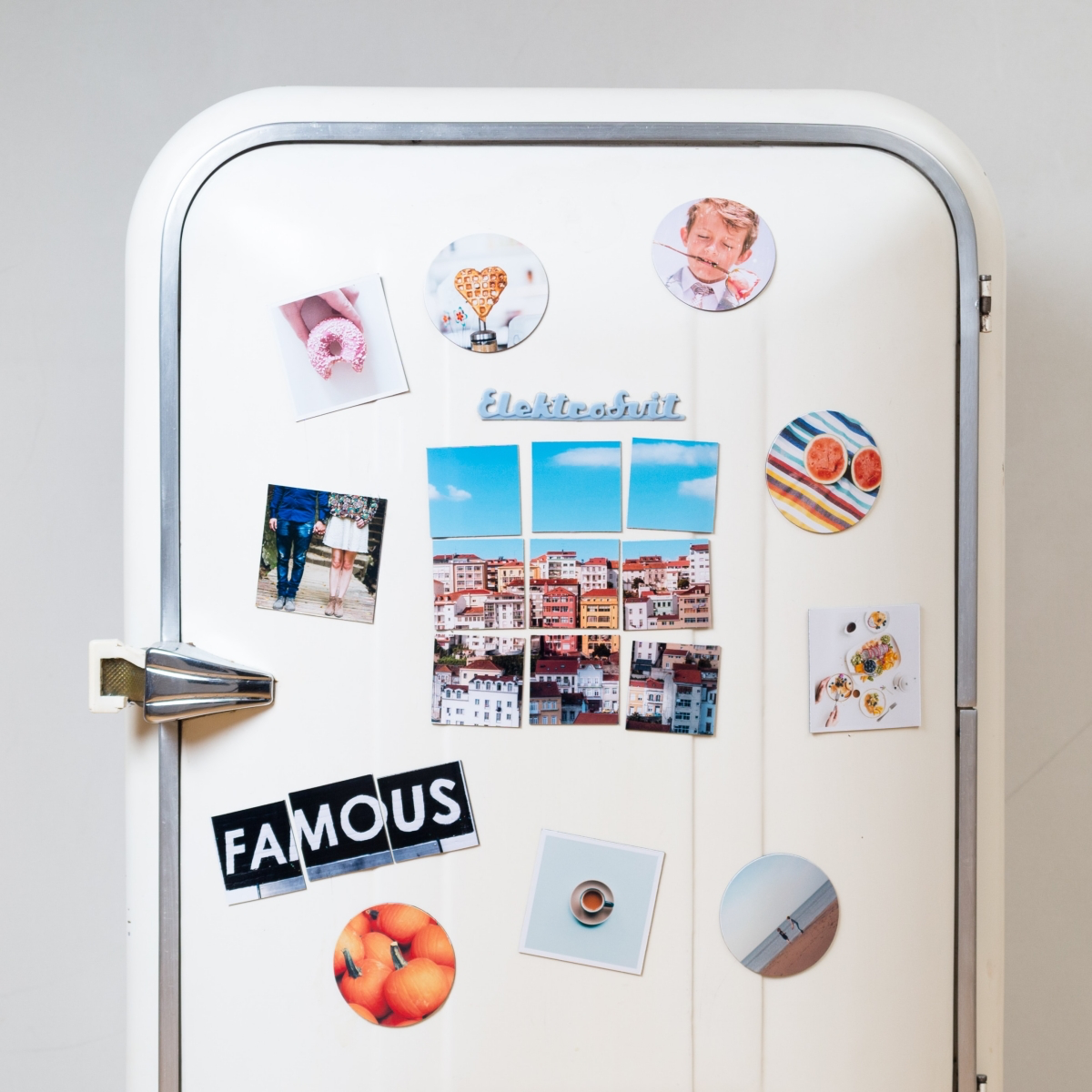
The Fridge Fix
The refrigerator is where good intentions often go to wilt. Let’s fix that.
Quick Challenge For You: Right now, go to your kitchen. Take your fruit bowl or that bag of apples and move it to the most central, visible spot in your entire kitchen—like the middle of the island or right in the center of the table. That’s it. You just used visual cues to your advantage. Congrats!
- Bring Produce to the Forefront: Stop hiding your veggies in the crisper drawers! When you get home from the store, take 20 minutes to wash, chop, and store your produce. Put carrot sticks, sliced bell peppers, and celery sticks in clear glass containers with a little water. Place them on the top shelf of your fridge, at eye level. They’ll be the first thing you see when you’re looking for a snack.
- Make Hydration Obvious: Keep a big, clear pitcher of filtered water right in the middle of the fridge. Toss in some lemon slices or mint to make it feel special. Sugary drinks? Move them to the back or a bottom drawer. Make water the easiest, most appealing choice.
- A Non-Negotiable Safety Tip: This is a hard rule in professional kitchens for a reason. Raw meat, poultry, and fish must ALWAYS be stored on the bottom shelf, preferably in a sealed container or on a plate. This prevents their juices from dripping down and contaminating everything else.
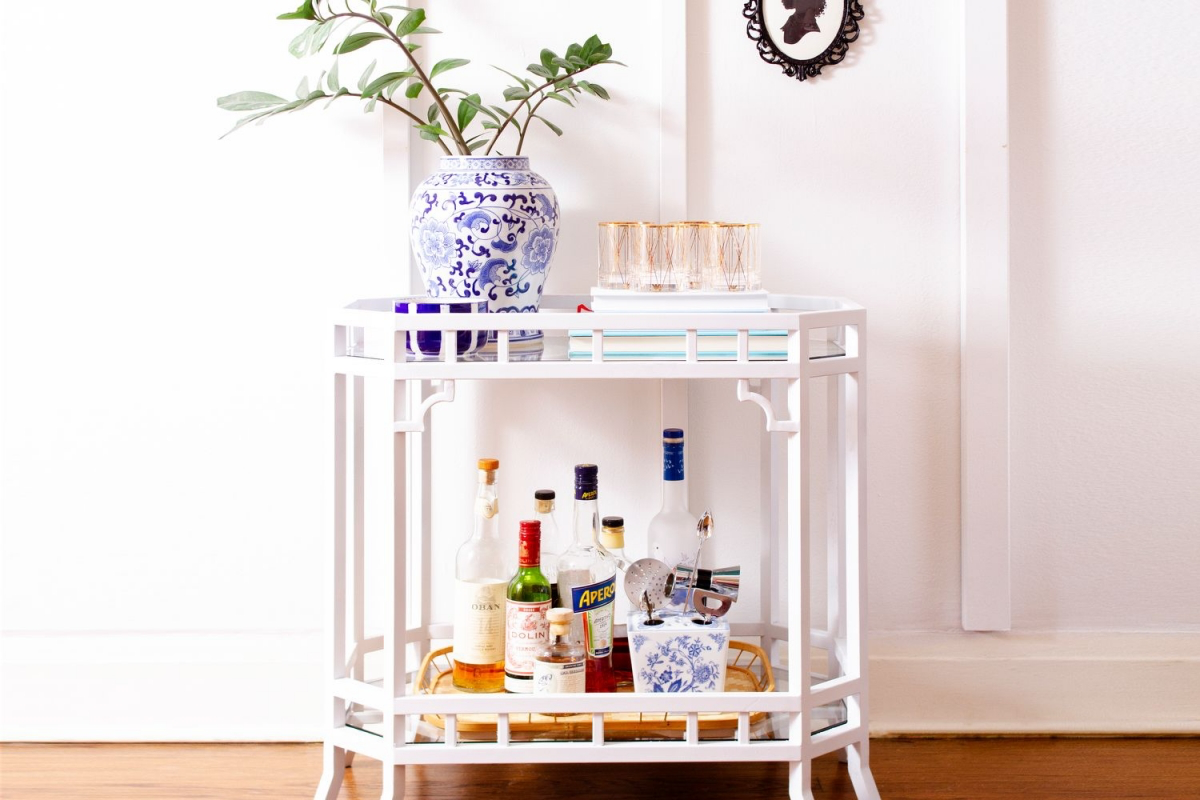
Let There Be (the Right) Light & Color
The feel of your kitchen has a huge impact on your stress levels, and stress is a major trigger for unhealthy eating. Creating a calm, pleasant space is a core part of the mission.
For a truly great kitchen, you need three layers of light. First is ambient, the main overhead light. Second, and most important, is task lighting. These are focused lights for your work areas. Under-cabinet LED strips are the gold standard here—they light up your prep zone perfectly and make food look amazing. The third is accent lighting, like a small lamp in a corner, which just makes the space feel cozier.
Good to know: Having an electrician hardwire under-cabinet lighting is a fantastic investment, but it can run you between $300 and $800 depending on the scope. Don’t let that price tag stop you! You can get 80% of the benefit from a $40 set of stick-on, battery-powered LED puck lights you can find at Home Depot or online. They’re a brilliant, budget-friendly starting point.
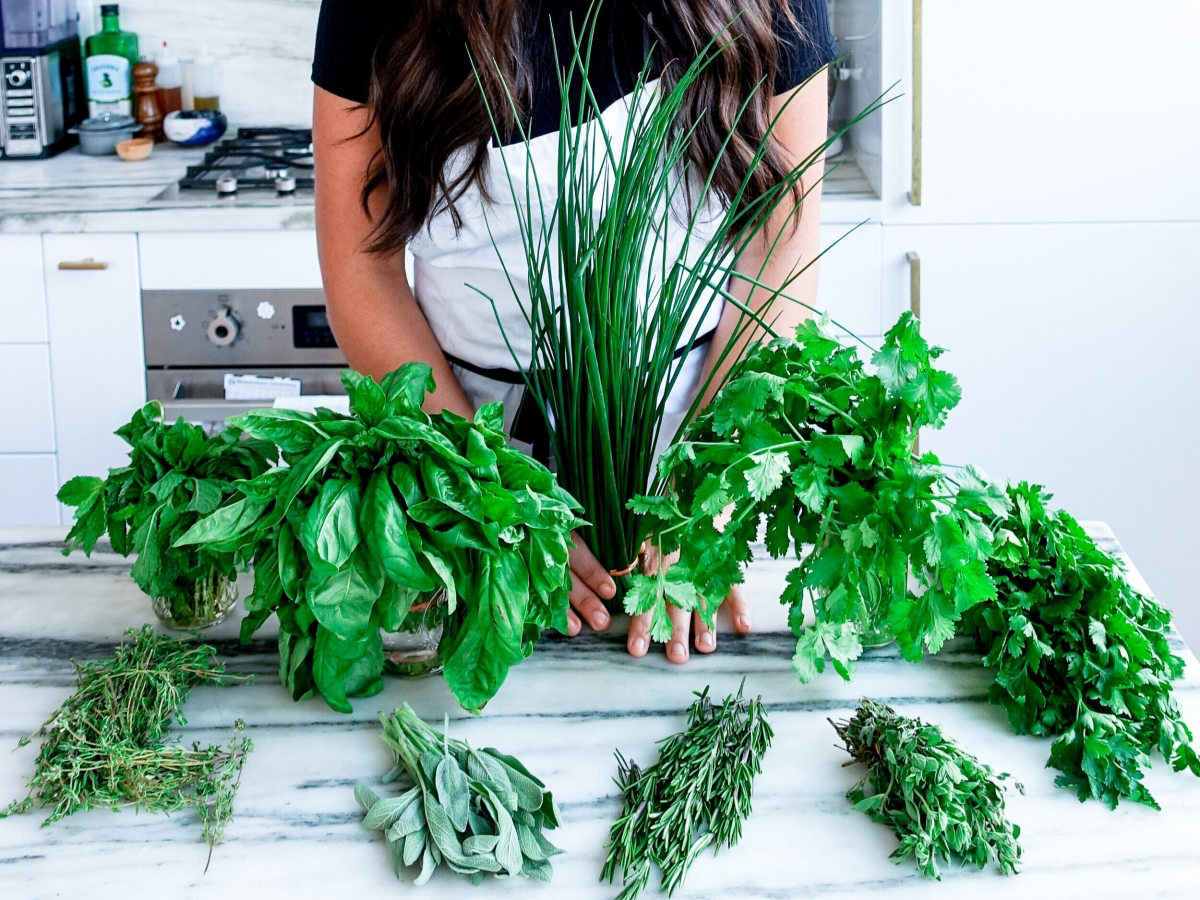
When it comes to color, forget those old myths like “red makes you hungry.” The truth is a bit more subtle. Highly saturated, bright colors can create an almost frantic energy. For a kitchen, we usually want calm and focus. I often suggest palettes inspired by nature—soft greens, gentle blues, earthy grays, and warm whites. Think of colors that feel like a deep breath, like Benjamin Moore’s ‘Healing Aloe’ or Sherwin-Williams’ ‘Sea Salt’. They’re soothing and have been shown to reduce stress.
What If My Kitchen is Tiny?
All this talk of 36-inch prep zones is great, but what if you’re working with a kitchenette? Don’t worry, these principles still apply—you just have to be a bit more creative.
- Go Vertical: Use wall space for magnetic knife strips and spice racks to free up your precious counter real estate.
- Sink Cover: Get a large, sturdy cutting board that’s designed to fit right over your sink. Instantly, you have a new prep area that’s perfect for washing and chopping.
- The Rolling Cart: A small rolling kitchen cart is a game-changer. It can act as a mobile prep station, extra storage, and can be tucked away when you’re done.

The Easiest Trick for Portion Control
Finally, let’s talk about the plates you eat off of. There’s a cool visual trick that shows a serving of food looks way bigger on a smaller plate and tiny on a huge one. It’s just how our brains work. And over the years, dinner plates have gotten massive—many are 12 inches or even bigger.
My advice? Use dinner plates that are 9 to 10 inches across. This used to be the standard size! It makes a normal, healthy portion of food look abundant and satisfying. You don’t have to measure a thing; the plate does the work for you. By the way, you can often find these in vintage shops, or a lesser-known trick is to just buy the “salad plates” at stores like Crate & Barrel or Pottery Barn. Honestly, today’s salad plates are yesterday’s dinner plates.
Your Healthy Kitchen To-Do List
Feeling overwhelmed? Don’t be. Start small. Here are the key takeaways:
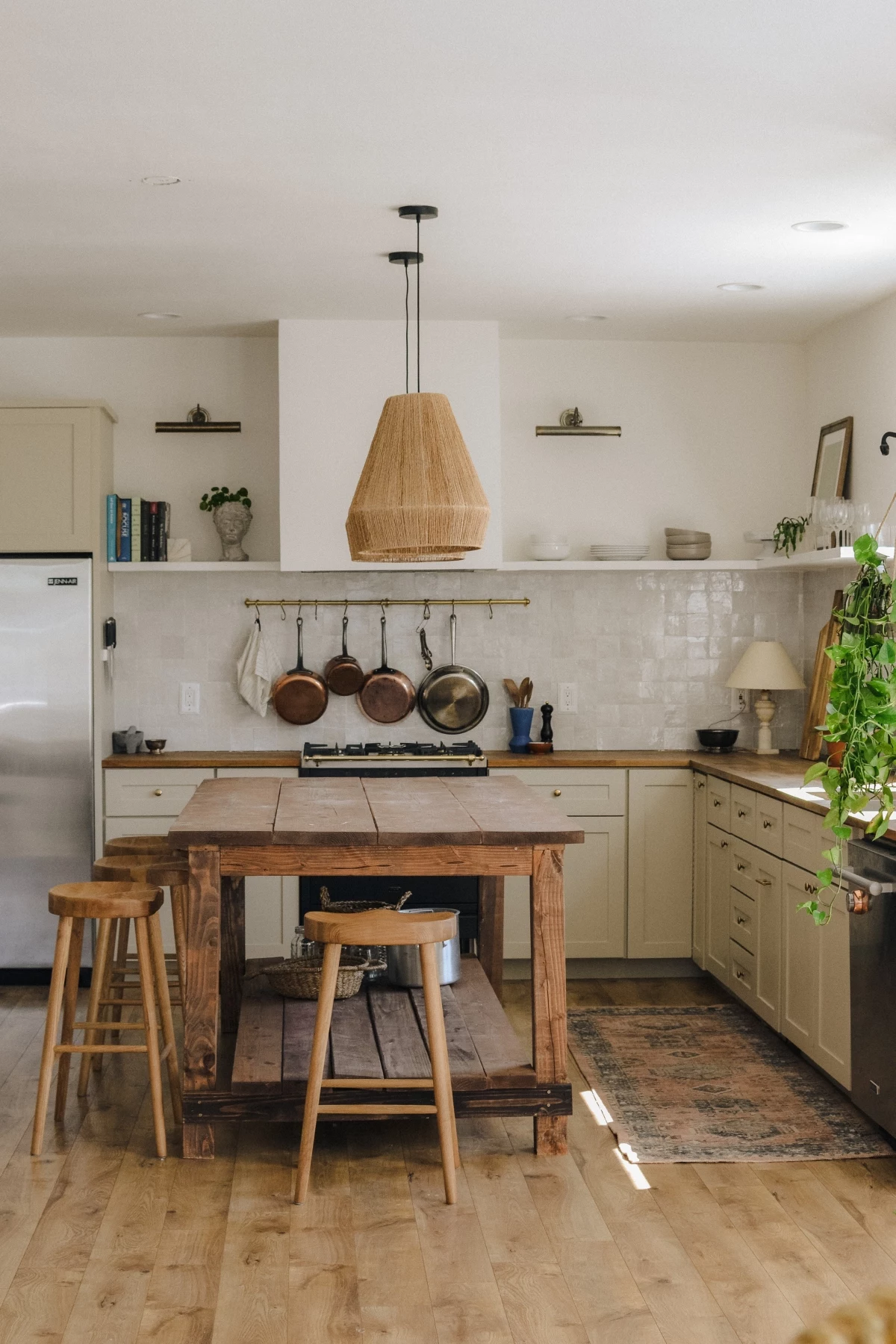
- Create a sacred, empty prep zone that’s at least 36 inches wide.
- Move healthy foods to eye-level in your pantry and fridge. Use clear containers.
- Create an “indulgence bin” for treats and hide it on a high or low shelf.
- Add task lighting over your prep area (even stick-on lights work wonders!).
- Swap your huge dinner plates for smaller ones (9-10 inches is perfect).
Remember, this is about making small, sustainable changes to your environment, not about a total overhaul of your life. Let your kitchen do some of the heavy lifting for you.
Inspirational Gallery
A study from the Cornell Food and Brand Lab found that people who kept fruit in a bowl on their counter weighed, on average, 13 pounds less than those who didn’t.
This isn’t magic; it’s visibility. What you see is what you crave. Swap the cookie jar for a beautiful ceramic bowl filled with seasonal fruits like apples, oranges, or peaches. It acts as an edible, natural centerpiece that gently nudges you toward a healthier snack.
Rethink your refrigerator’s geography. The most valuable real estate is at eye-level. Use it for what you want to eat more of.
- Top Shelf: Dedicate it to grab-and-go healthy snacks: individual yogurts, hummus pots, and pre-portioned nuts.
- Eye-Level Shelves: Store pre-washed salad greens and pre-chopped veggies (peppers, carrots, cucumbers) in clear, airtight containers.
- Door: Perfect for pitchers of infused water, not sugary sodas.
Does starting a healthy meal feel like a treasure hunt for tools?
Create a dedicated
Clear Glass Containers: They make your healthy leftovers look appealing and let you see exactly what you have, reducing food waste. Brands like Pyrex or Glasslock are great because you can store, reheat, and serve all in one dish.
Opaque or Stained Plastic: These containers hide their contents, turning your fridge into a mystery box of forgotten meals. They can also harbor smells and degrade with microwave use.
The choice is clear—seeing your food is the first step to eating it.
A critical, often-overlooked health tool: Good lighting. You’re far less likely to chop a colorful salad if your prep space is dark and shadowy. Installing bright, under-cabinet LED strips is a simple upgrade that transforms the task. It makes colors pop, improves safety, and turns your counter into an inviting stage for healthy cooking.
- Makes healthy smoothies and soups in minutes.
- Blends fibrous greens and frozen fruit without struggle.
- Encourages you to use up produce before it goes bad.
The secret? A high-performance blender. While costly, a machine like a Vitamix or Blendtec is an investment in convenience. By making the process so fast and easy, it removes the friction between you and a nutrient-packed meal.
Create a dedicated hydration station. Instead of tucking it away, place a stylish water filter pitcher, like a Brita or a more design-forward LARQ, in a visible spot on your counter. Arrange a few of your favorite glasses or water bottles next to it. This simple, visual cue is a constant reminder to drink more water throughout the day.
“The more steps it takes to get a food, the less we’ll eat of it. In one of our office studies, moving candy just six feet away caused people to eat about half as much.” – Brian Wansink, PhD
Apply this in reverse. Make unhealthy snacks inconvenient. Move chips, cookies, and crackers from the main pantry to a higher shelf, a bin in the garage, or a less-used cupboard. Adding just one or two extra steps—like needing a stepladder—can be enough to deter mindless snacking.
Channel the effortless health of a Mediterranean kitchen by focusing on fresh access. You don’t need a remodel, just a shift in priorities. Install a simple wall-mounted rack to hang your most-used pans. Keep a large wooden bowl on the table, always filled with seasonal fruit and vegetables. Most importantly, clear a sunny windowsill for a small pot of basil or rosemary. It’s a space that feels alive and built around the ingredients themselves.
Is your counter an appliance graveyard? The bulky stand mixer you use twice a year or the panini press collecting dust are taking up prime real estate.
- Identify any appliance you haven’t used in the last month.
- Find a new home for it in a pantry, a deep cabinet, or a storage room.
This instantly reduces visual clutter and frees up space for daily health-promoting activities, like prepping vegetables or keeping a fruit bowl.

